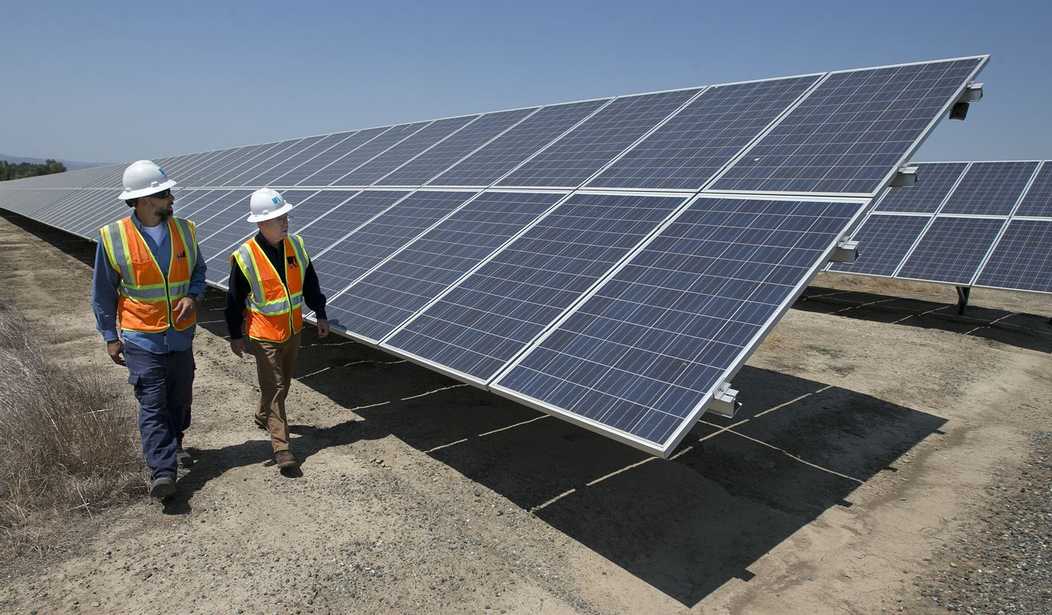California got through the biggest heat wave of the year without having to order any blackout but only just barely. Gov. Newsom is praising the state’s shift to renewable energy as if avoiding the blackouts is proof that the shift to renewables is working.
“Went right up to the edge of breaking our grid, but it didn’t,” Newsom said at a Clinton Global Initiative event this week, describing this month’s scorcher to dignitaries gathered in New York City for Climate Week at the U.N. “This transition worked.”
The reality, however, is a lot messier…
The 10 days of triple-digit temperatures across the state this month sent power demand surging to a record level, bringing state regulators close to ordering rolling blackouts, a potentially deadly move and a political disaster.
It was the realization of a nightmare scenario a top state energy official said he’s been considering for months.
“Oh, my lord, we are in a very bad situation compared to even the worst case that we anticipated,” Siva Gunda, vice chair of the California Energy Commission, said he recalls thinking in the spring, when supply chain delays and a tariff on solar imports — compounded by severe drought — started to look like a multi-year power crisis.
We actually did have blackouts in some places on the hottest days but those were ordered by the power companies not the state. I wonder to what extent those outages helped the state’s independent regulator avoid ordering rolling blackouts. In any case, everyone agrees we came really close.
Wednesday the Washington Post published a story arguing that the real lesson Newsom and others should have learned from barely avoiding blackouts this summer is that solar without battery storage really doesn’t work very well.
The state has built up so much renewable energy production in recent years that it can rarely use it all during peak production hours. But it also doesn’t have enough storage capacity to hang onto it for when it might be needed…
…on Sept. 6, the state set a record for power consumption — and came perilously close to imposing targeted blackouts to safeguard the energy grid, something that hasn’t happened in two years. State officials say they avoided blackouts that evening only by blasting an urgently worded emergency text message to residents, who responded by quickly curbing their energy use.
Yet just hours earlier, California had been awash in energy. Solar production was booming by midmorning as the sun beat down on hundreds of solar panel plants all over the state. By 10 a.m., the California Independent System Operator, the state’s electric grid manager, was rejecting hundreds of megawatts of solar energy power — unable to use it in the moment, make room for it on the state’s congested power grid or save it for later when consumer demand would peak.
By 5 p.m., with massive consumer demand straining the grid, officials had turned down more than 3,000 megawatts of solar power energy. Customer demand was soaring, but solar production declined as evening fell, and officials no longer had access to that overabundant solar power from earlier in the day.
This is exactly what happened when the state had to order rolling blackouts in 2020. Demand for energy peaks just as solar generation is fading. And no matter how many more solar panels you install on the grid that is not going to change. In fact, more solar probably makes the problem worse because as the sun goes down, operators will be struggling to replace a larger portion of the overall demand.
The bottom line here is that if the state insists on going this route it has to have a plan for dealing with the actual energy usage habits of Californians. I give Newsom some credit for pushing to keep the Diablo Canyon reactor open for an additional five years. But all that does is avoid making the currently problem much worse. It’s not so much a win as that we barely managed to avoid an own goal. What it does not do is solve the existing problem.
The obvious solution would be to set up battery storage (or gravity battery storage) when solar production peaks at midday so you have that energy available when you need it at 5pm. But even that solution has it’s problems. There was a fire at a battery storage facility this week.
In the early hours on Monday, a Tesla Megapack battery caught fire at a key California power storage facility, the state’s largest utility said in a statement to TechCrunch.
According to PG&E, the utility “became aware of a fire in one Tesla Megapack at its Elkhorn Battery Storage facility” at around 1:30 a.m. in Moss Landing, which is located about 25 miles south of Santa Cruz, in Monterey County. The site is home to a facility that houses 256 Megapacks and is capable of storing up to 730 megawatt-hours of energy…when not aflame.
No one was hurt so as energy related disasters go in California this wasn’t a big one. Still, what’s doesn’t make sense to me is what Newsom is doing now, i.e. claiming victory after an extremely close call without any clear plan to avoid a repeat of the same situation next year.








Join the conversation as a VIP Member